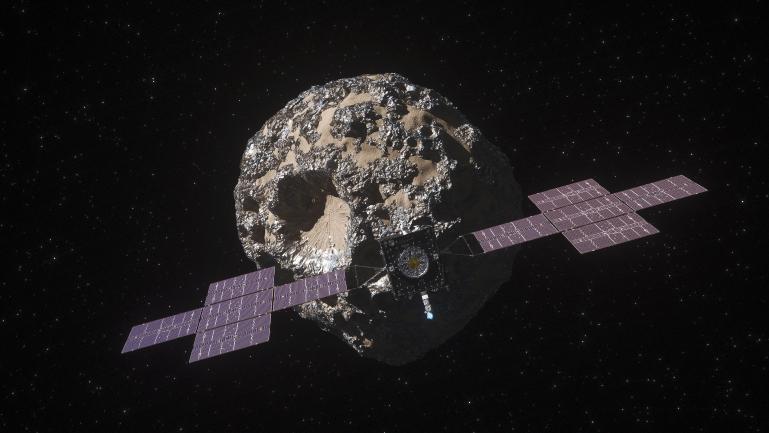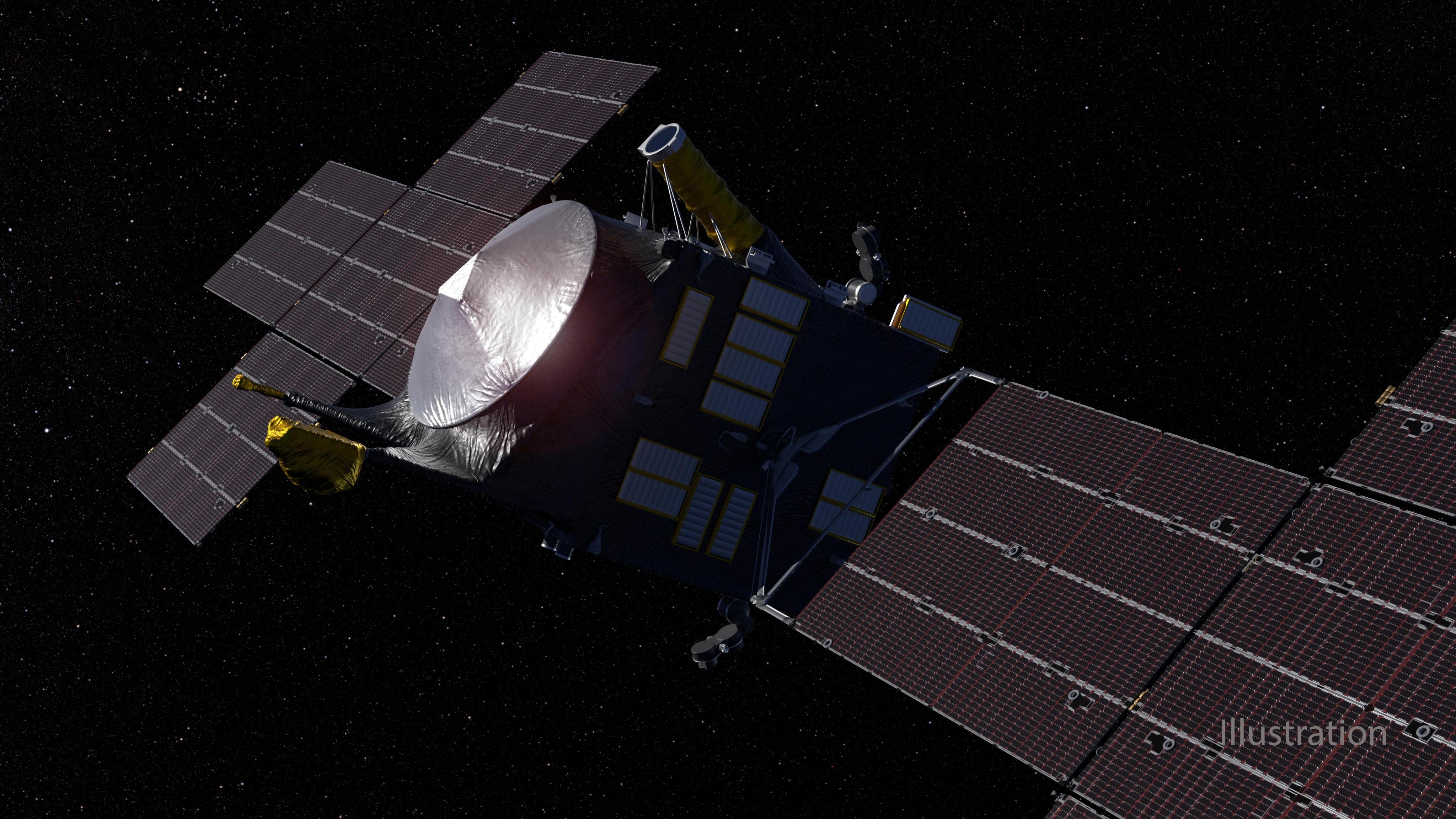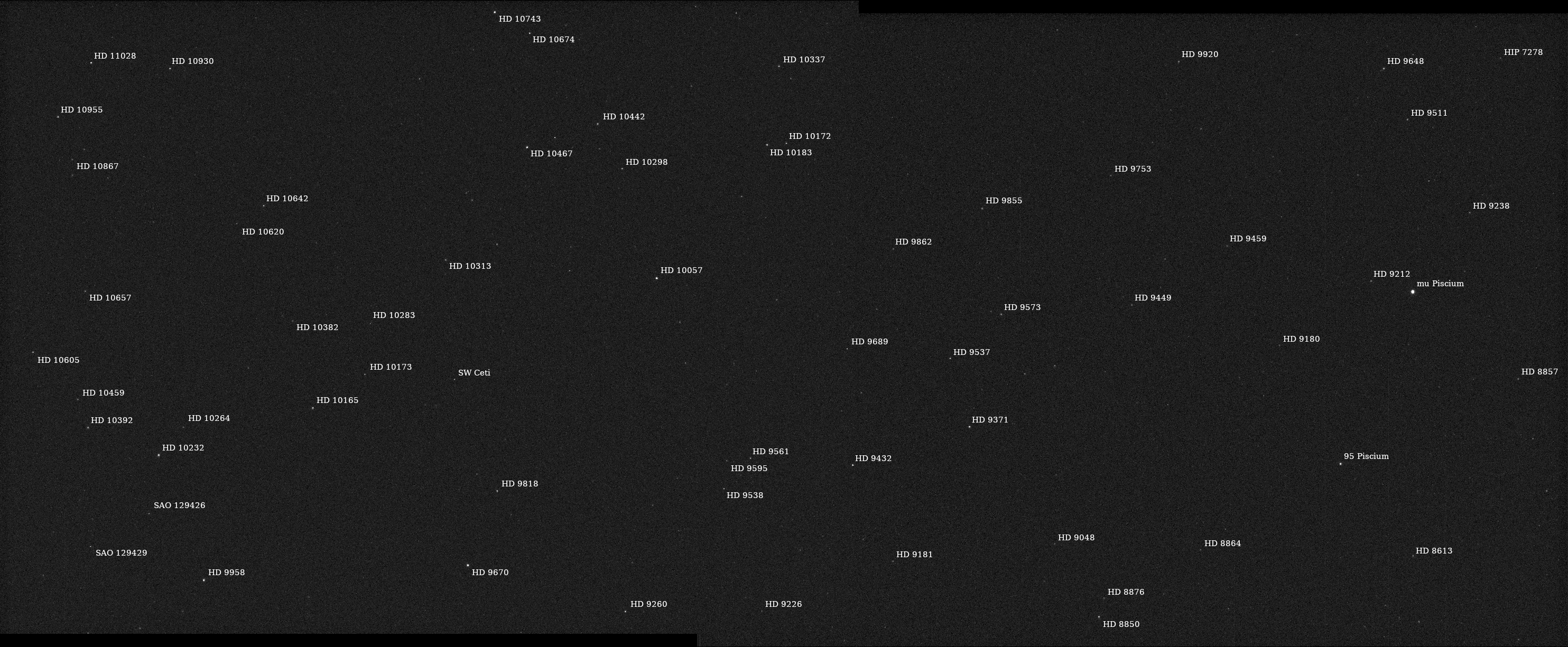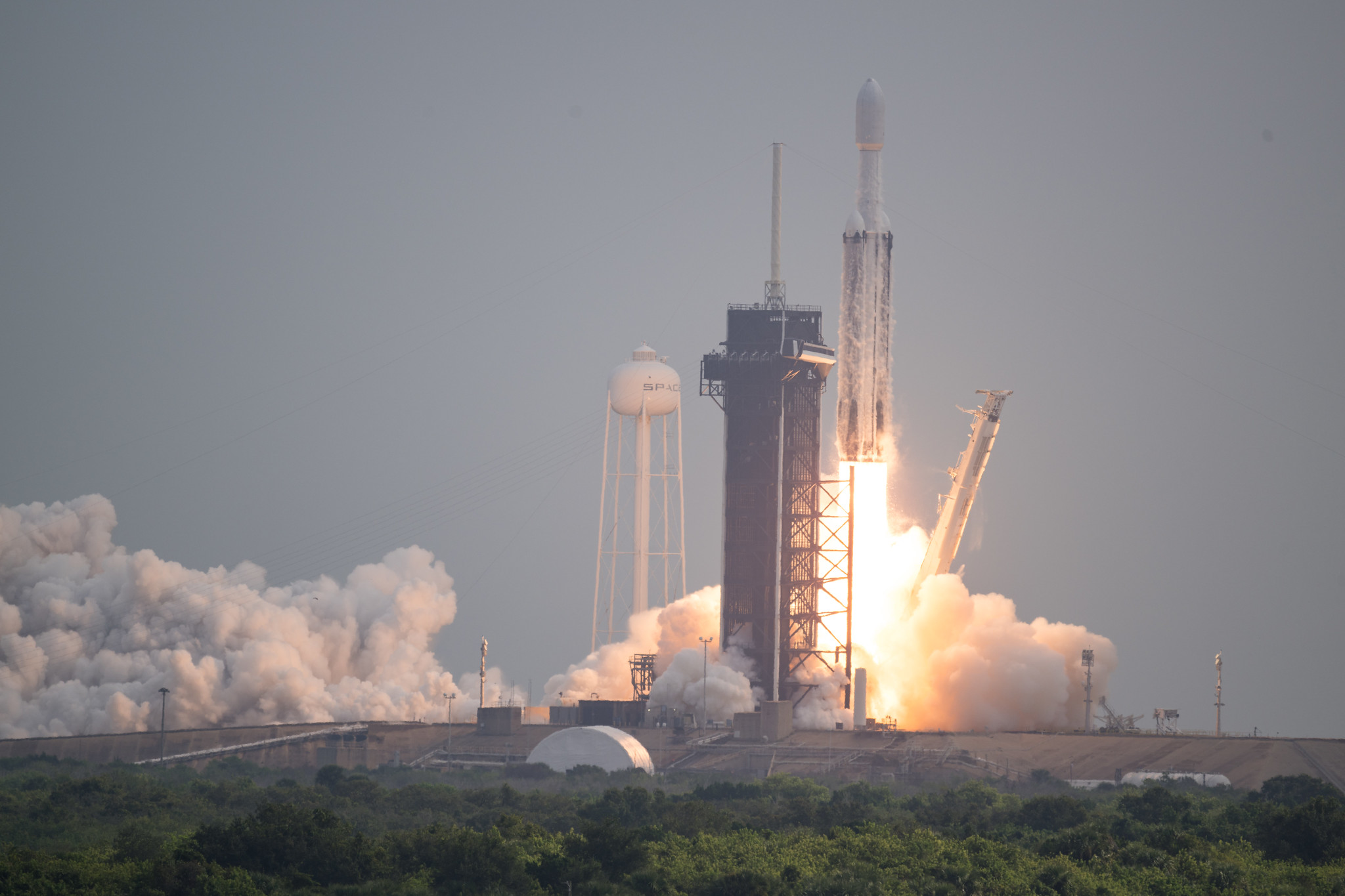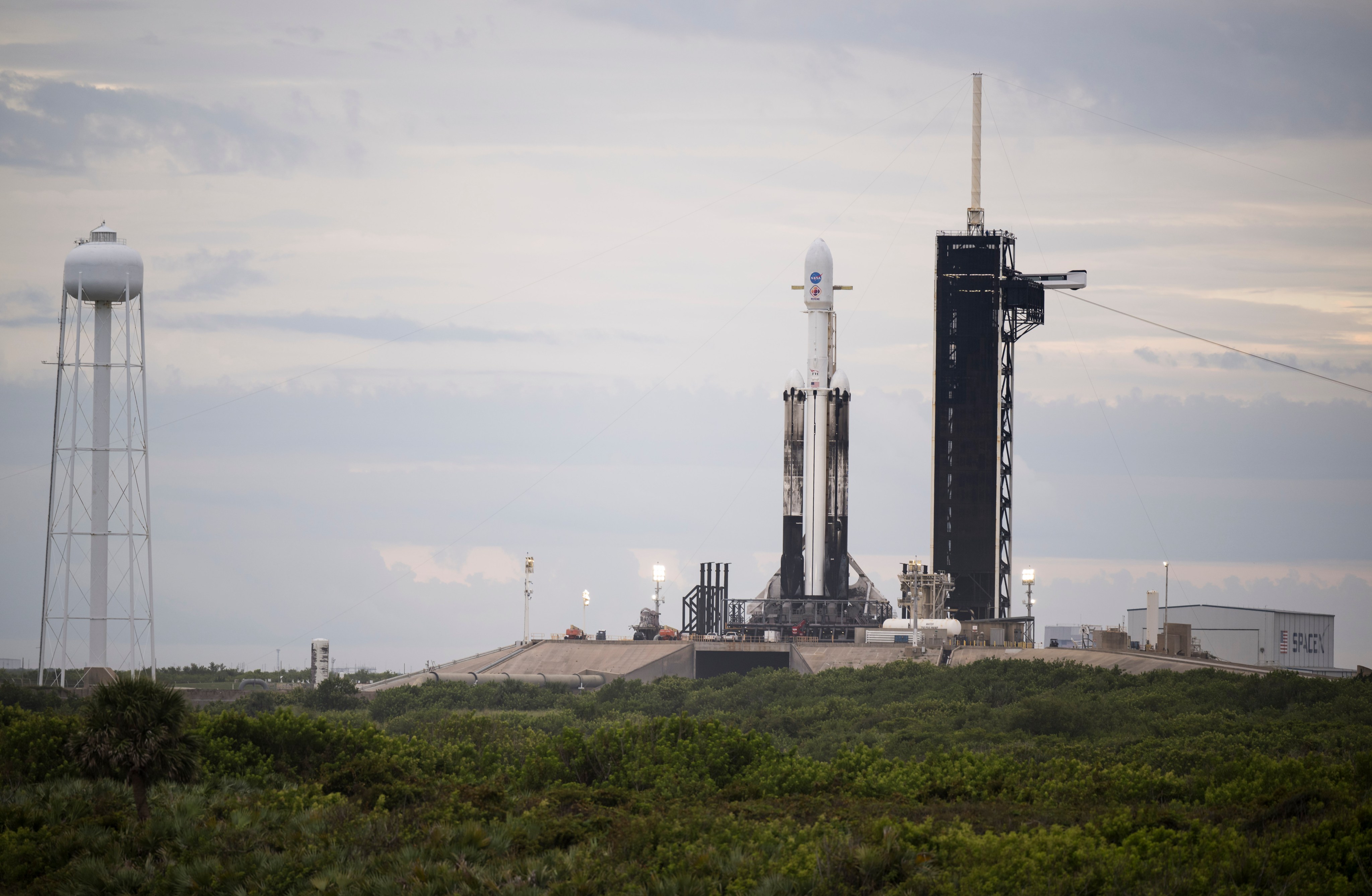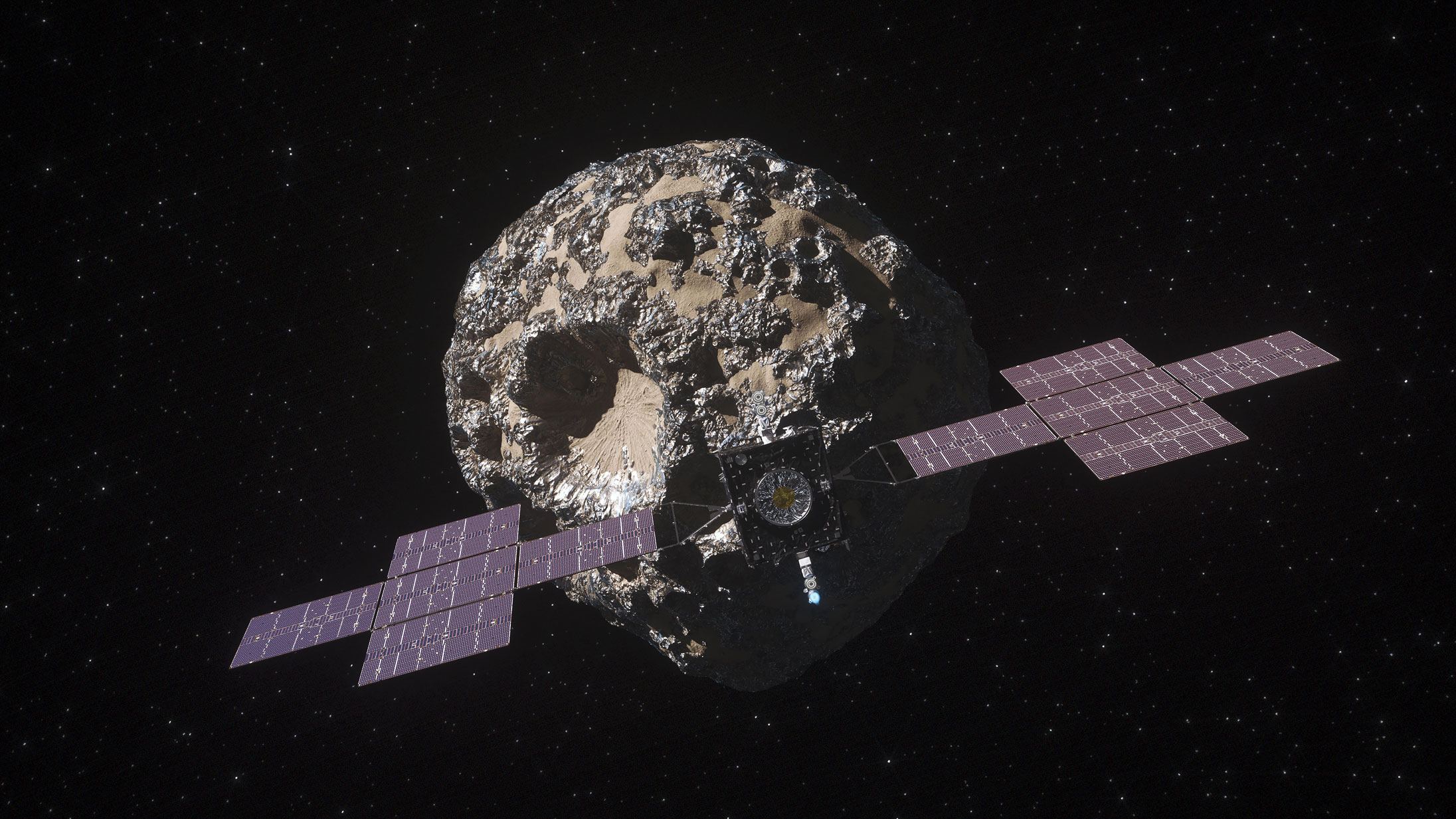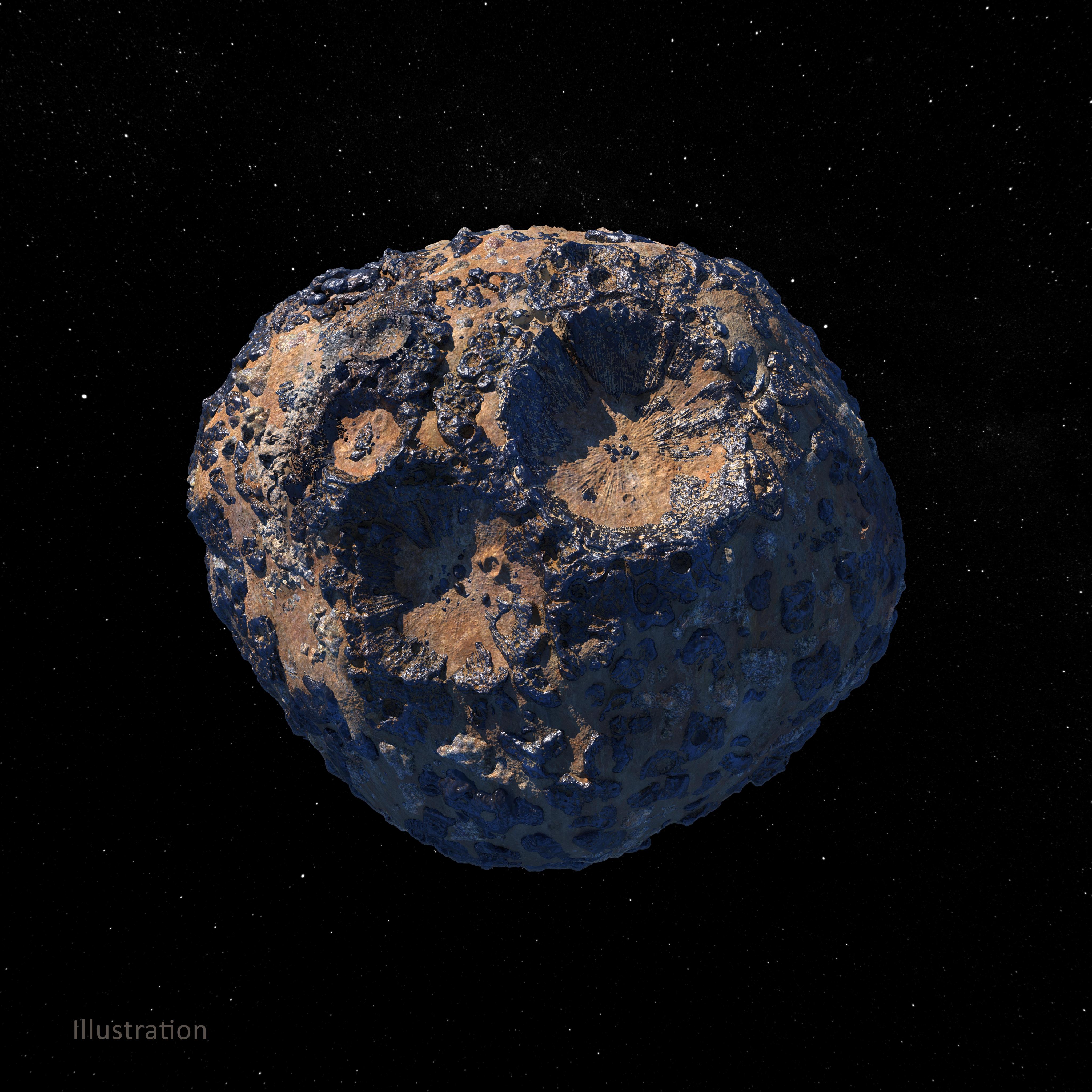Overview
One of the most intriguing objects in the main asteroid belt, Psyche is a giant metal rich asteroid, about three times farther away from the Sun than is Earth.
Psyche has an irregular, potato-like shape. If it were sliced in half horizontally at the equator – picture a squished oval – it would measure 173 miles (280 kilometers) across at its widest point and 144 miles (232 kilometers) long. Its surface area is 64,000 square miles (165,800 square kilometers).
Up until recently, the scientific consensus was that the asteroid Psyche consisted mostly of metal. The more recent data indicates that the asteroid is possibly a mix of metal and silicate, the same material found in glass and sand. The best analysis indicates that Psyche is likely made of a mixture of rock and metal, with metal composing 30% to 60% of its volume. The asteroid’s composition has been determined by radar observations and by the measurements of the asteroid’s thermal inertia (how quickly an object gains or re-radiates heat).
By combining radar and optical observations, scientists generated a 3D model of Psyche that shows evidence of two craterlike depressions. It suggests that there is significant variation in the metal content and color of the asteroid over its surface. But until NASA's Psyche mission sees the asteroid Psyche up close for the first time, we will not know what it actually looks like.
Scientists think Psyche may consist of significant amounts of metal from the core of a planetesimal, one of the building blocks of our solar system. The asteroid is most likely a survivor of multiple violent hit-and-run collisions, common when the solar system was forming. Thus, Psyche may be able to tell us how Earth’s core and the cores of the other rocky, or terrestrial, planets came to be.
Psyche orbits the Sun between Mars and Jupiter at a distance ranging from 235 million to 309 million miles (378 million to 497 million kilometers) from the Sun. That’s 2.5 to 3.3 Astronomical Units (AU), with 1 AU being the distance between Earth and the Sun. Psyche takes about five Earth years to complete one orbit of the Sun, but it takes just over four hours to rotate once on its axis (a Psyche “day”).
Exploration
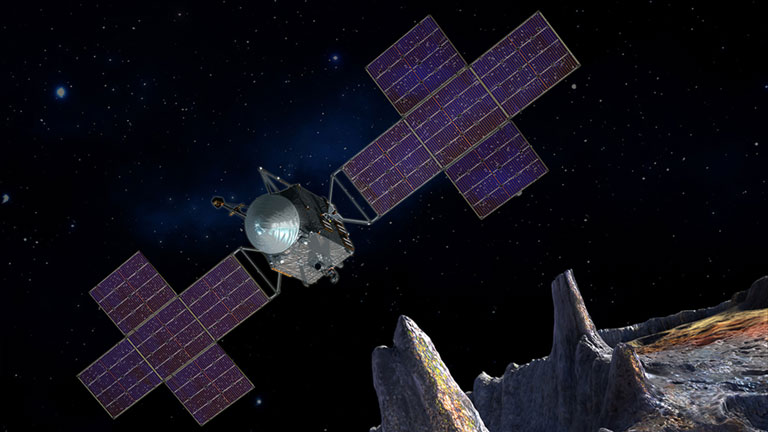
This intriguing asteroid is now the primary target of NASA's Psyche mission. The Psyche spacecraft will launch in October 2023 and travel to the asteroid using solar-electric (low-thrust) propulsion, following a Mars flyby and a gravity assist.
Once in orbit, the spacecraft will map and study Psyche using a multispectral imager, a gamma-ray and neutron spectrometer, a magnetometer, and a radio instrument (for gravity measurement). The mission’s goal is, among other things, to determine whether Psyche is indeed the core of a planetesimal.
How Psyche Got its Name
Psyche was discovered by Italian astronomer Annibale de Gasparis on March 17, 1852. He named the asteroid for Psyche, the Greek goddess of the soul who was born mortal and married Eros (Roman Cupid), the god of Love.
Because it was the 16th asteroid to be discovered, it is sometimes referred to as 16 Psyche.


